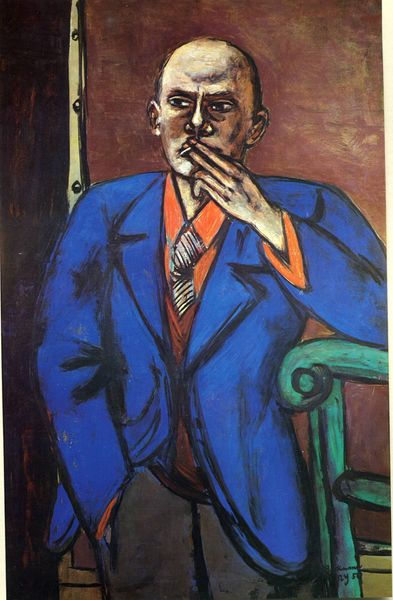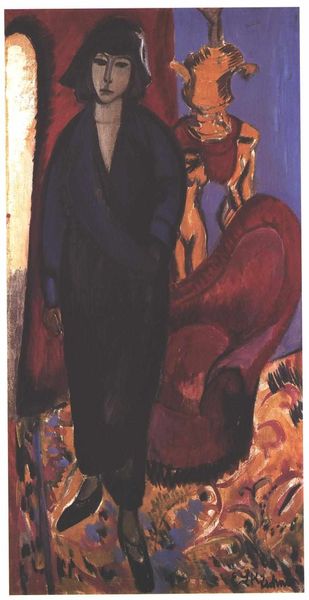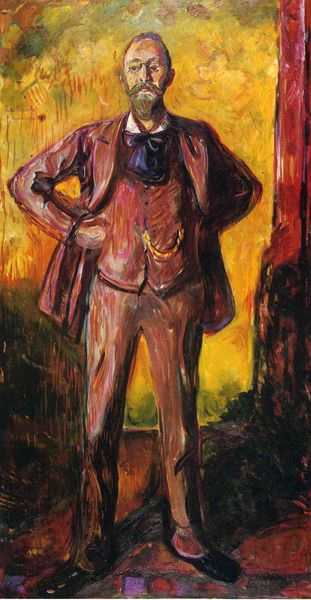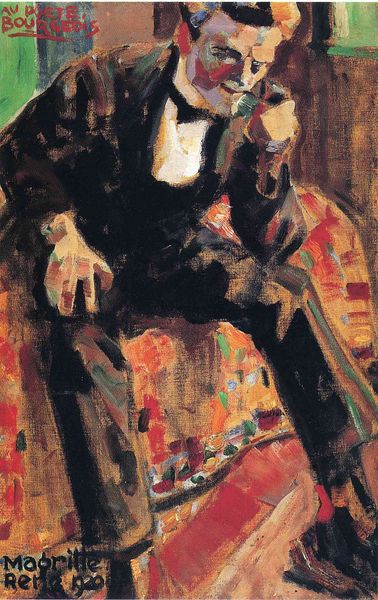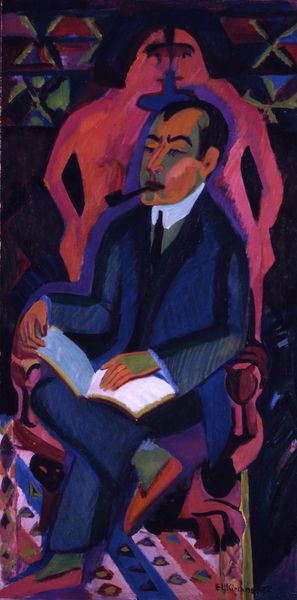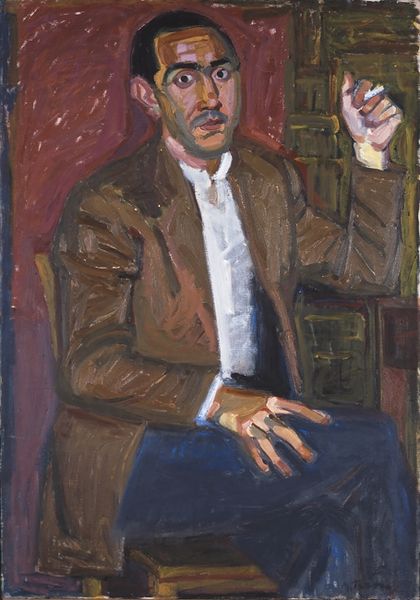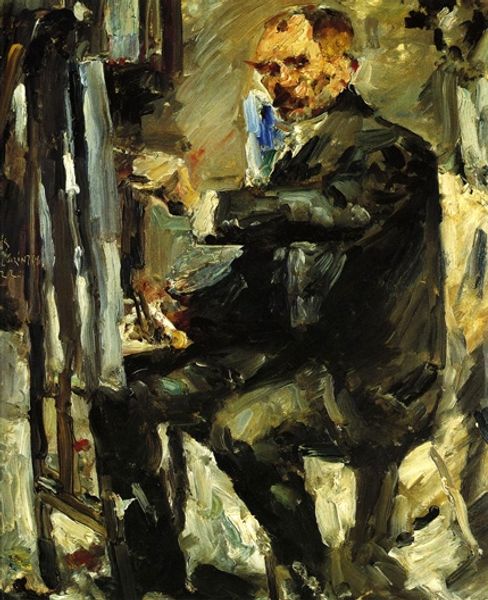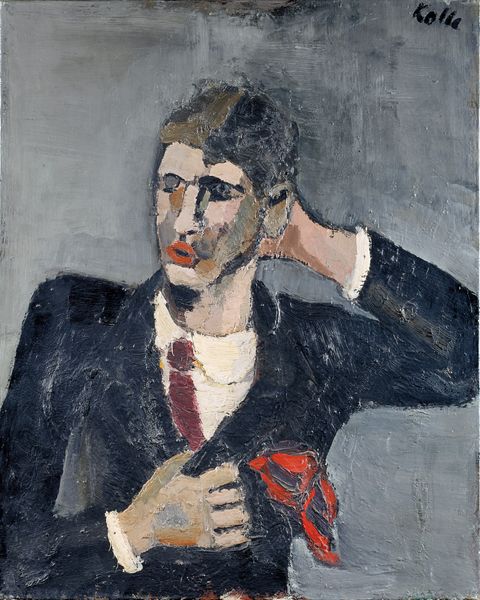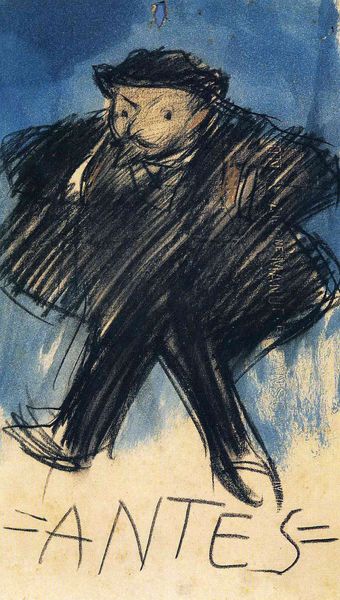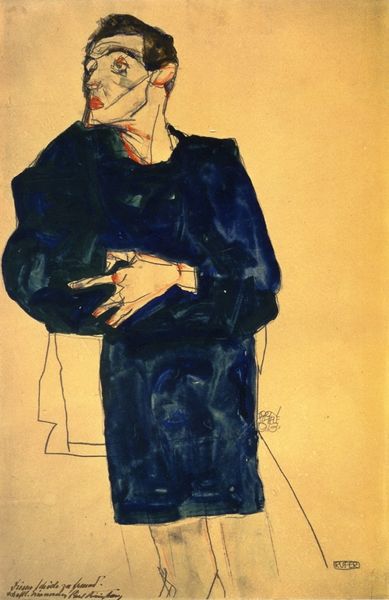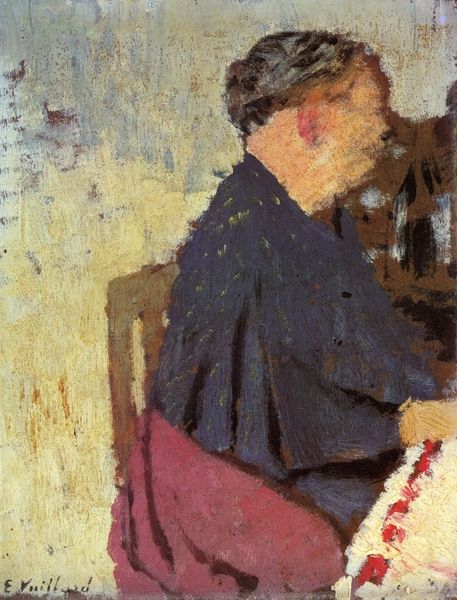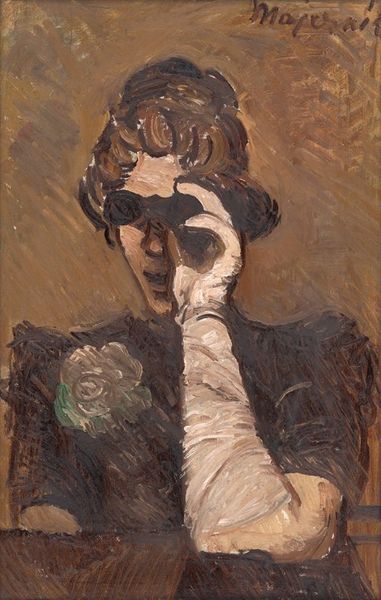
oil-paint
#
portrait
#
oil-paint
#
german-expressionism
#
oil painting
#
neo expressionist
#
expressionism
#
portrait art
#
fine art portrait
#
expressionist
Dimensions: 81 x 54 cm
Copyright: Public domain
Editor: We’re looking at Walter Gramatté’s “Portrait Alexander Graf Brockdorf,” painted in 1919 with oil on canvas. The heavy lines and almost mask-like treatment of the face give it a really haunting feel. How do you see this portrait operating within its historical context? Curator: This portrait resonates deeply with the socio-political climate of post-World War I Germany. The Expressionists were grappling with disillusionment, and that emotional rawness is palpable. Note the unsettling use of color – almost feverish. Do you see how the conventional portrait is subverted? Editor: Definitely. It’s not flattering in a traditional sense. The intense colors and distorted features make Graf Brockdorf look almost pained. What would an audience at the time have made of it? Curator: The German art scene in 1919 was incredibly fractured. On the one hand, Expressionism was gaining traction as a way to articulate modern anxieties, but on the other, it was considered by some to be degenerate and offensive, particularly its more grotesque or unflattering portrayals. Gramatté, aligning himself with a heightened subjectivity, rejects any commitment to realism, and thereby challenges what a portrait could be. Considering how it reframes its sitter, who do you imagine this was for? Editor: Maybe not a public commission? I’d guess it’s more likely something for personal reflection, or for a close circle who understood this new visual language. It’s like the artist is revealing an inner truth, rather than documenting a surface reality. Curator: Precisely. And remember that Gramatté created this portrait in the midst of the rise of modernism. This shift also challenges the very idea of the "artist-genius," because its radical self-expression is enabled by societal movements as much as by one artist. Editor: That makes so much sense. I’m seeing this piece in a completely different light now, understanding it less as an isolated artwork and more as part of a much bigger conversation about the role of art and artists in a time of upheaval. Curator: I agree. Exploring these complex interactions between art, culture, and history is key to a deeper understanding.
Comments
No comments
Be the first to comment and join the conversation on the ultimate creative platform.
